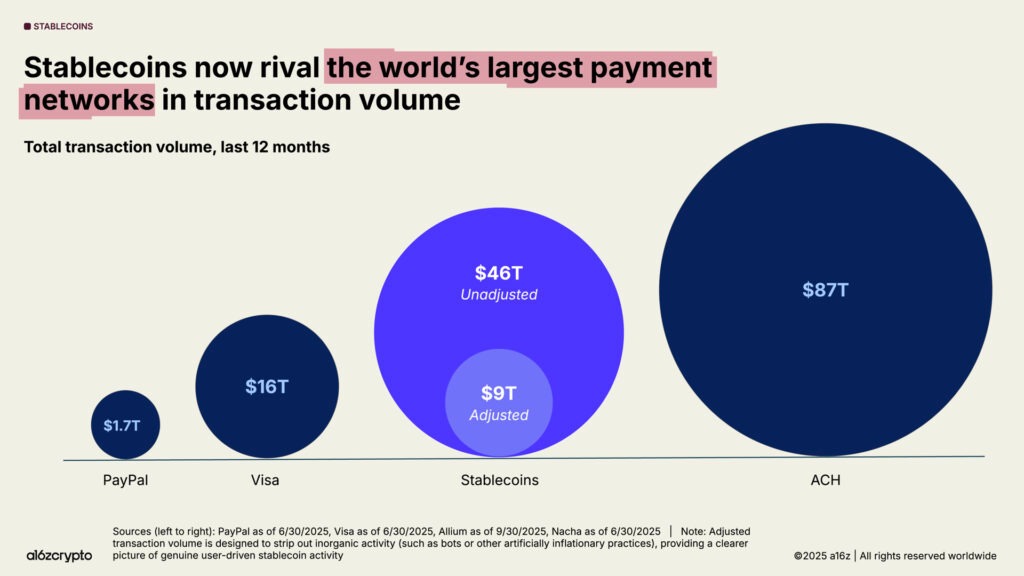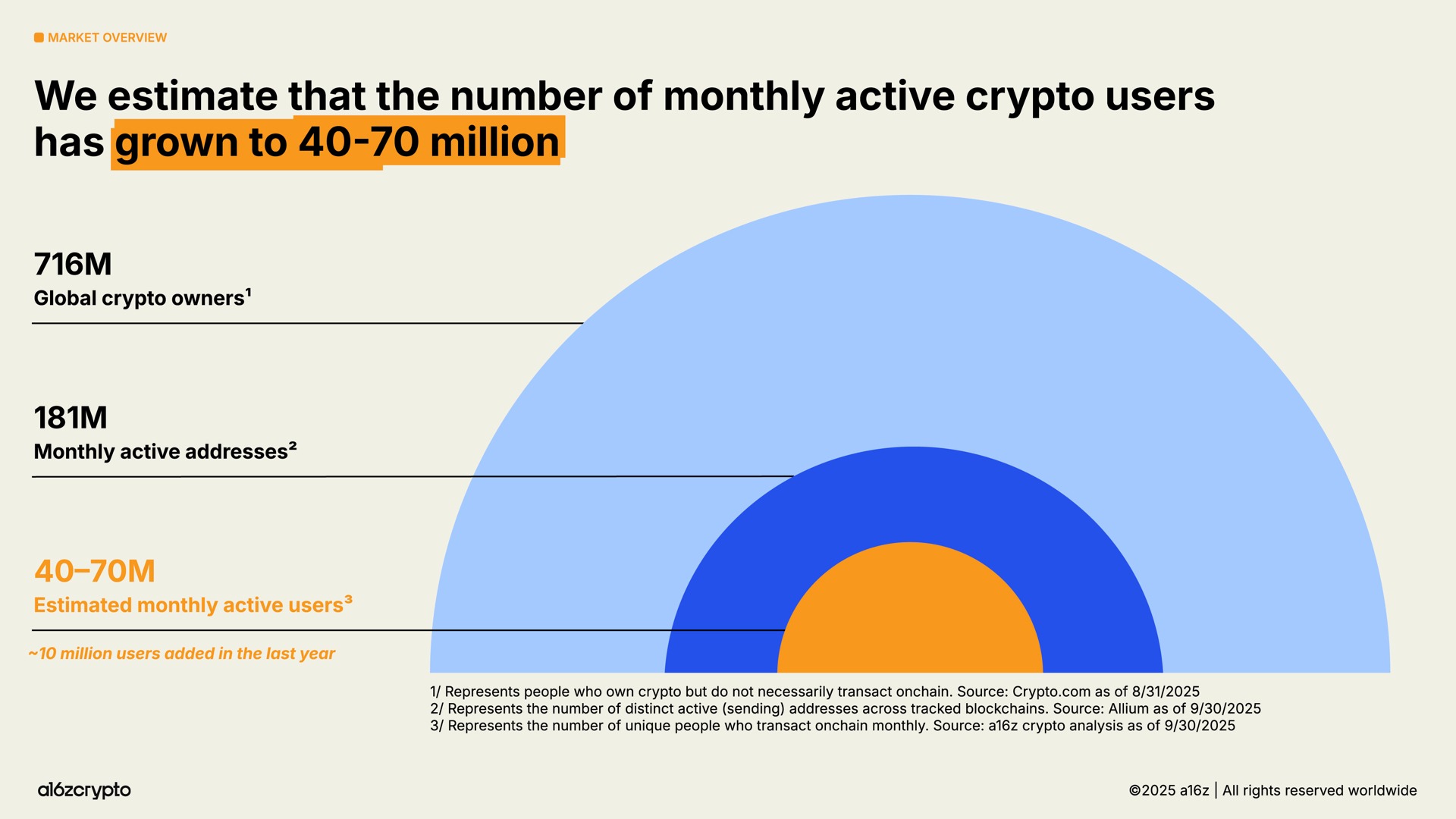Stablecoins adoption in 2025 has surged, accounting for over 1% of US dollars in circulation, driven by institutional players like BlackRock and Visa, with transaction volumes hitting $9 trillion in the past year, enhancing global payment efficiency through blockchain advancements.
-
Stablecoins now represent more than 1% of circulating US dollars, holding over $150 billion in US Treasurys.
-
Institutions such as JPMorgan Chase and PayPal are integrating stablecoins for faster, cheaper cross-border transfers.
-
Blockchain throughput has increased over 100-fold in five years, enabling 3,400+ transactions per second and supporting $9 trillion in annual stablecoin volume.
Stablecoins adoption in 2025 reaches new heights, with over 1% of US dollars in circulation via digital tokens. Institutions like BlackRock drive growth amid regulatory clarity. Explore how this shapes crypto’s future—stay informed on blockchain innovations today!
What is Driving Stablecoins Adoption in 2025?
Stablecoins adoption in 2025 is propelled by institutional involvement and technological advancements in blockchain, allowing seamless global transactions without traditional banking delays. Venture capital firm Andreessen Horowitz’s State of Crypto report emphasizes how firms like BlackRock, Visa, and JPMorgan are embedding stablecoins into their operations. This shift underscores stablecoins’ role as efficient digital dollar alternatives, with volumes reaching $9 trillion annually.

Stablecoins have quickly emerged as one of the most practical use cases in crypto. Source: a16z Crypto
The cryptocurrency landscape continues to evolve with stablecoins at its core, transitioning from niche trading tools to mainstream payment solutions. As per the Andreessen Horowitz report, stablecoins facilitate the fastest and most cost-effective dollar transfers worldwide, bypassing outdated payment systems.
How Are Institutions Boosting Stablecoins Integration?
Traditional finance leaders are accelerating stablecoins adoption by launching dedicated services and products. BlackRock and Fidelity have introduced crypto ETFs incorporating stablecoin mechanisms, while Visa and Stripe enable merchant settlements using these assets. The report from Andreessen Horowitz details how JPMorgan’s blockchain initiatives process billions in daily transactions, reducing costs by up to 90% compared to legacy wires.
Fintech innovators like PayPal and Robinhood further this momentum by allowing users to hold and spend stablecoins directly in apps. According to data cited in the State of Crypto report, monthly active crypto users have grown to between 40 million and 70 million, reflecting broader accessibility. Expert analysts at Andreessen Horowitz note that these integrations signal a maturing ecosystem where stablecoins bridge fiat and digital economies.
Regulatory progress bolsters this trend. The US GENIUS Act mandates reserve transparency for stablecoin issuers, fostering trust among institutions. In the UK, forthcoming frameworks by 2026 aim to standardize operations, potentially unlocking European markets. These developments, combined with blockchain scalability—now handling over 3,400 transactions per second—position stablecoins as indispensable for global finance.

Beyond institutional participation, a16z estimates that the number of monthly crypto users has grown between 40 million and 70 million. Source: a16z Crypto
Stablecoins’ market capitalization has swelled to $316 billion, with Tether’s USDT leading at $127 billion in reserves, primarily US Treasurys. Circle’s USDC and emerging synthetics like Ethena’s USDe, with $11 billion in supply, diversify options for users seeking stability in volatile markets.
Frequently Asked Questions
What Percentage of US Dollars Are Now Stablecoins in 2025?
Stablecoins represent over 1% of US dollars in circulation, equating to more than $150 billion held in blockchain-based assets. This milestone, as outlined in the Andreessen Horowitz State of Crypto report, highlights their emergence as a significant macroeconomic tool, surpassing many nations in US Treasury holdings.
Why Are Stablecoins Gaining Traction Among Institutions?
Institutions favor stablecoins for their speed, low fees, and global reach in payments and settlements. With transaction volumes at $46 trillion unadjusted over the past year—an 87% rise—firms like BlackRock and Visa leverage them to streamline operations, making them ideal for efficient, borderless finance as voice searches increasingly query their practical benefits.
Key Takeaways
- Institutional Surge: Major players like JPMorgan and PayPal are embedding stablecoins, driving $9 trillion in annual transactions and reducing reliance on slow traditional rails.
- Technological Leap: Blockchain improvements enable 3,400+ TPS, a 100-fold increase, supporting scalable adoption without congestion.
- Regulatory Clarity: US GENIUS Act ensures transparency, while UK frameworks by 2026 will expand safe usage—monitor updates to capitalize on this growth.
Conclusion
In summary, stablecoins adoption in 2025 marks a pivotal shift, with over 1% of US dollars digitized and institutions like Fidelity and Stripe leading the charge toward integrated financial systems. Backed by Andreessen Horowitz’s insights, this evolution promises enhanced efficiency and accessibility in global payments. As blockchain matures, stablecoins will likely underpin everyday transactions—consider exploring their potential for your portfolio today.






